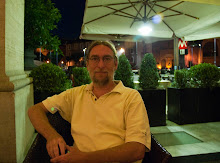The sky is only partly cloudy this morning and will improve all day. It will be easily the nicest day of digging we have had the whole month.
The still photographers, myself included, have a blast with the light. Over the course of the day I get maybe 90 minutes of digging in. Included in the digging will be the removal of the two stones that have been blocking my access to “My Thing”. I now have clear access to it. Of course, Peter shows up and decides I need to expand my work area AWAY from “My Thing” and I spend my 90 minutes cleaning the new area he wants me to work in.
A couple of the still photo projects I am working on are hands with tools and still life of tools. It is in the course of working on the former that it finally happens. I am walking around an area I worked in during the first couple of days I was here and has not been worked in since. I am trying to find the right place to take a photo of someone working a small area with her tools. I have to be careful about where I set my feet so as not to stand on an important piece of archeology (or “to not pull a Peter”).

Looking at my feet I see a large round green object. “No”, I think, “It can’t be that easy.” Bending down I pick it up and sure enough, it is – a large Roman coin.

After 3 weeks of carefully sifting endless mounds of dirt for the chance of finding even a small coin, I find mine lying on the surface, having been exposed by the recent rain. It is the size of a US half dollar and twice as thick. Given the size, it is likely to be from the early to mid Imperial period. The woman who I was about to take a picture of (a friend) is furious that it was lying just 10 feet from where she has been working for a week. The coin has some hard dirt adhering to it and will have to be carefully cleaned in the University’s lab to bring out the detail but I finally have my coin.

There are some folks who like to do Roman reenacting setting up onsite for a show that is going to happen this weekend and for a while the girls have a good time putting on helmets that are way too big and banging swords.

At the end of the day, Peter gets everyone together for one of his “What it all means” tours. He points out that both trenches have a number of “circular” features that seem to be similar in size and have a lot of animal bones in and around them. His thinking now is that we have been working in a medieval cattle-processing center, built with the material, and over the top of, the old Roman fort and vicus. While we have found lot of Roman things (coins and pottery) the current layer of stones seem to have been rearranged to support the cattle activity. This includes one stone circular pit that has a cattle skull buried, apparently deliberately, right in the center.
Friday night I spend handing out in the house kitchen just talking with some friends, letting the party crowd do their thing without my help.














































